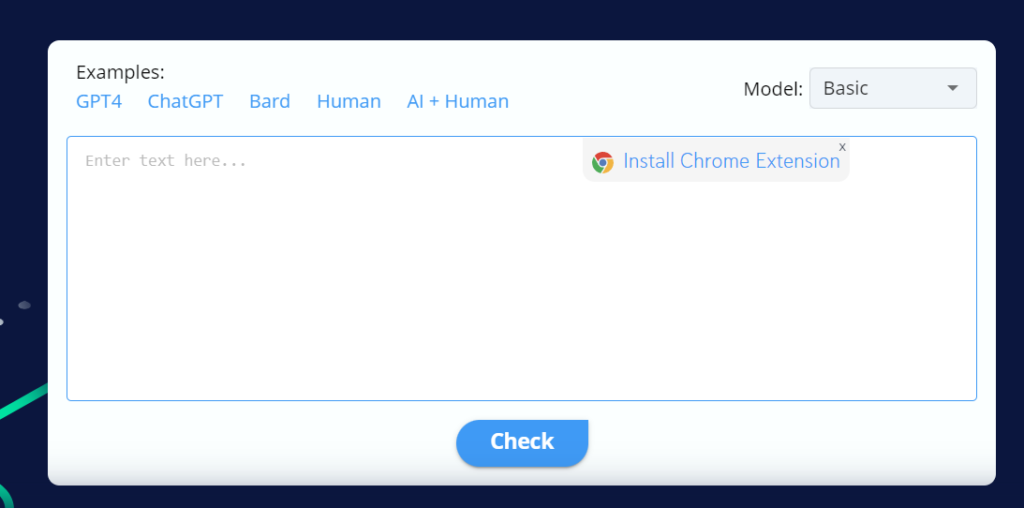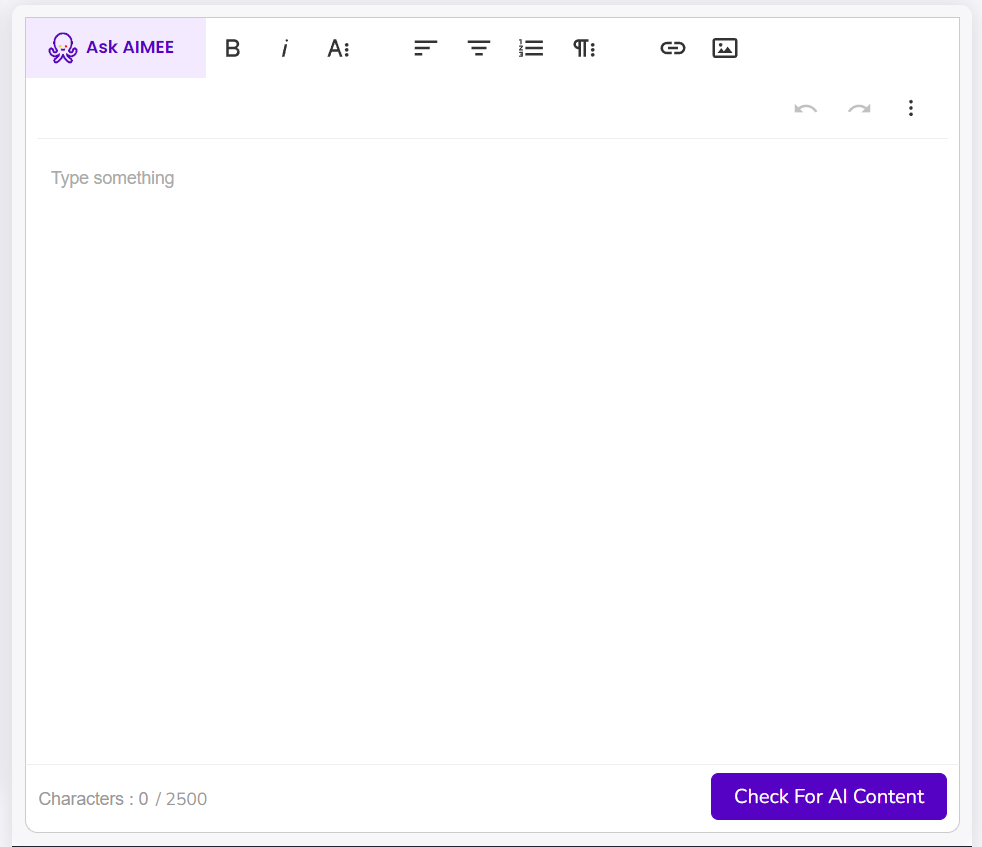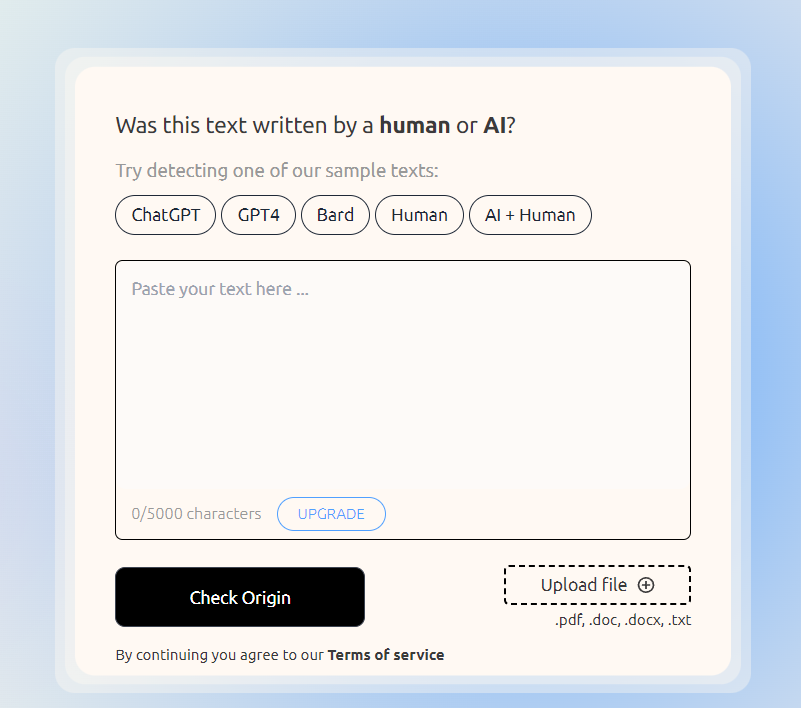Content creation and management have become a fundamental element for brands and businesses seeking to stand out online. Well-written content on Social Media or in terms of SEO will surely generate more conversions. However, with the rise of Artificial Intelligence (AI), automatic content generation has become increasingly common. This raises an important question: how can we detect whether an article or piece of content has been generated by AI? In this article, we will explore the importance of quality content and which AI detector tools are available on the market.
The importance of AI content detection
Artificial intelligence has advanced to the point where it can create entire articles—on any topic or in any language—using tools such as ChatGPT or AI-powered social media applications. This has introduced new challenges regarding content authenticity and originality.
Companies must be cautious about AI-generated content, as it can result in inaccurate, duplicated, or low-quality articles. Ensuring that published content is relevant and high-quality is essential for SEO performance and attracting qualified traffic.
On the other hand, using AI in content creation also has many advantages. It can boost productivity and allow marketing and writing teams to generate more content in less time, which can be particularly useful for companies seeking to optimize their strategies.
Are there penalties for AI-generated content on your website?
Google, as the leading search engine, plays a key role in detecting AI-generated content. This is because it focuses on content quality rather than its origin. The company has stated that its goal is to provide users with original, high-quality content and that it uses ranking and helpful content systems to prevent AI-generated content used for spam purposes.
According to the “Google Search Guidance about AI-Generated Content” published on February 8, 2023, Google aims to reward original, high-quality content regardless of how it was created. Its approach is based on the qualities of E-E-A-T: experience, expertise, authoritativeness, and trustworthiness. This means that if AI-generated content is helpful and meets these standards, Google will treat it favorably.
However, Google also clearly states that the use of automation—including AI-generated content—with the main goal of manipulating search rankings violates its spam policies. It’s important to note that not all automated content is considered spam. AI can be a powerful tool for creating quality content, as long as it meets Google’s quality standards and isn’t used to manipulate rankings.
This guidance from Google reinforces the importance of ensuring the quality and authenticity of AI-generated content since Google values relevance and usefulness to users over the method of creation.
Can Google detect AI-generated content?
Google has stated that it is capable of detecting AI-generated content and has warned against content scraping. Duy Nguyen, a member of Google’s Search Quality team, has declared that content scraping, even with modifications, violates its spam policy. Google uses algorithms to identify and penalize sites that copy content from others.
While Google doesn’t disclose specific details on how it detects AI-generated content, its ability to do so highlights the importance of maintaining content authenticity.
Different ways to detect AI-generated content
Detecting AI-generated content can be challenging, but there are several strategies you can use to identify it—even without dedicated tools. Here are some effective strategies backed by concrete examples:
Look for repetitive or unusual patterns in the text
AI often generates content with repetitive patterns, such as similar sentence structures across paragraphs. These patterns can be a clear sign that the content was not written by a human. For example, if you find an article that frequently repeats the same sentence structure with minor variations, it’s likely AI-generated. Example:
“The benefits of exercising are many. Exercising regularly can improve your cardiovascular health. In addition, exercise can also help you lose weight.”
Run a quick AI query and compare
A practical way to detect AI-generated content is to use AI tools themselves for comparison. For instance, if you have a suspicious article, you can paste a fragment into a generative AI tool and compare the results. If the output is nearly identical, the article was probably created by AI.
Check for lack of originality
Plagiarism detection tools like Grammarly can help determine whether content has been duplicated or copied from other sources. If you find significant overlaps with existing online articles or identical passages across multiple sites, you may be dealing with AI-generated or plagiarized content.
Review outdated or inaccurate information
Many AI tools may include outdated or inaccurate information since they cannot always verify data accuracy. If you find content that contradicts reputable sources or seems outdated, that’s a red flag.
Perform contextual analysis
Assess whether the content connects concepts and ideas coherently. AI systems sometimes struggle to maintain logical flow in longer articles. If a text abruptly shifts topics or lacks narrative fluency, it may have been generated by AI.
AI Detectors: 5 Tools to Identify AI-Generated Content
Copyleaks

This platform stands out for its ability to identify plagiarized content by comparing it to millions of online sources. It can also detect AI-generated text. Copyleaks uses advanced AI algorithms to analyze and flag similarities, providing detailed reports that help maintain content integrity.
Additionally, it offers a free Chrome extension that allows users to analyze up to 250 words at no cost as a trial before choosing the paid version for extended use.
Content at Scale

Content at Scale stands out for its AI detector, which provides a “human content score” to evaluate content authenticity. The platform helps marketers, agencies, publishers, and freelancers adapt to AI-generated content while keeping the human touch.
Originality.AI

This Chrome extension allows you to verify in real time whether an article was generated by AI. Originality.AI, the company behind it, offers multiple tools such as the “Accurate AI Checker,” “Plagiarism Checker,” and “Fact Checker,” all designed to help content creators, editors, and marketers publish with integrity.
GPT Zero

GPT Zero is a simple yet effective tool used by educators and businesses to assess whether content has been AI-generated. More than just an AI detector, GPT Zero is committed to preserving the human essence of content creation in a world flooded with AI text. It’s considered the gold standard in AI detection, trained to identify models like ChatGPT, GPT-4, Bard, LLaMA, and others.
Sapling

Sapling offers an efficient AI content detector capable of identifying text generated by models like GPT-3 or ChatGPT from samples as short as 50 words. This free AI-based writing detector provides a probability score indicating whether text was generated by AI, such as ChatGPT or Bard. It is especially useful for educators, SEO professionals, and content moderators.
Just like continuous optimization, integrating AI content detection should become a standard practice in the content development process for marketing professionals.



